Independence Day is approaching in the United States, and many people will be out celebrating. One very traditional part of July 4th is watching large fireworks displays, and some of you might be out with your camera to photograph the festivities. Whether you are watching a large public display, or are having a small celebration at home, here are some tips to help you create beautiful fireworks photographs.
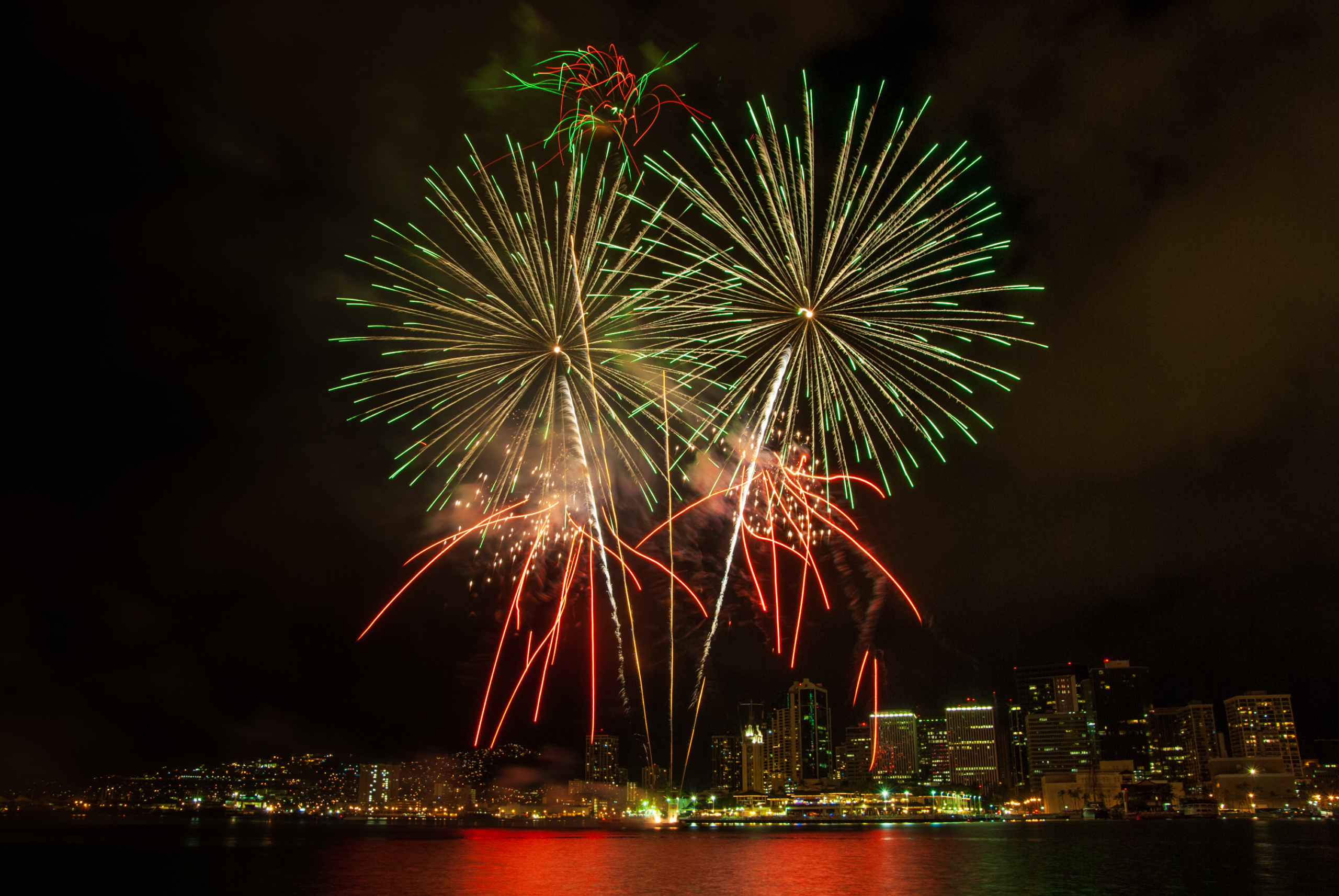
Use a tripod and cable release
You need to make sure that your camera is as still and stable as possible to get the best shots, and a sturdy tripod is the best way to do that. If you’re unsure of your tripod’s stability, or if you know it can be a little shaky, then here’s a tip: look underneath the middle portion of the tripod to see if there is some sort of hook. Then, take your camera bag (or anything heavy with a little handle) and hang it from that hook. The weight of your bag will keep the tripod from shaking. (Just be sure that you don’t also bump whatever is hanging from that hook while making your photos!)
If you have a cable release, be sure to bring it! If you don’t have a cable release, you can also try playing with the self-timer feature but your shots and opportunities will be limited. Some camera models have off-brand cable releases for under $20 if you are interested in doing any type of night or experimental photography then I highly recommend getting one.
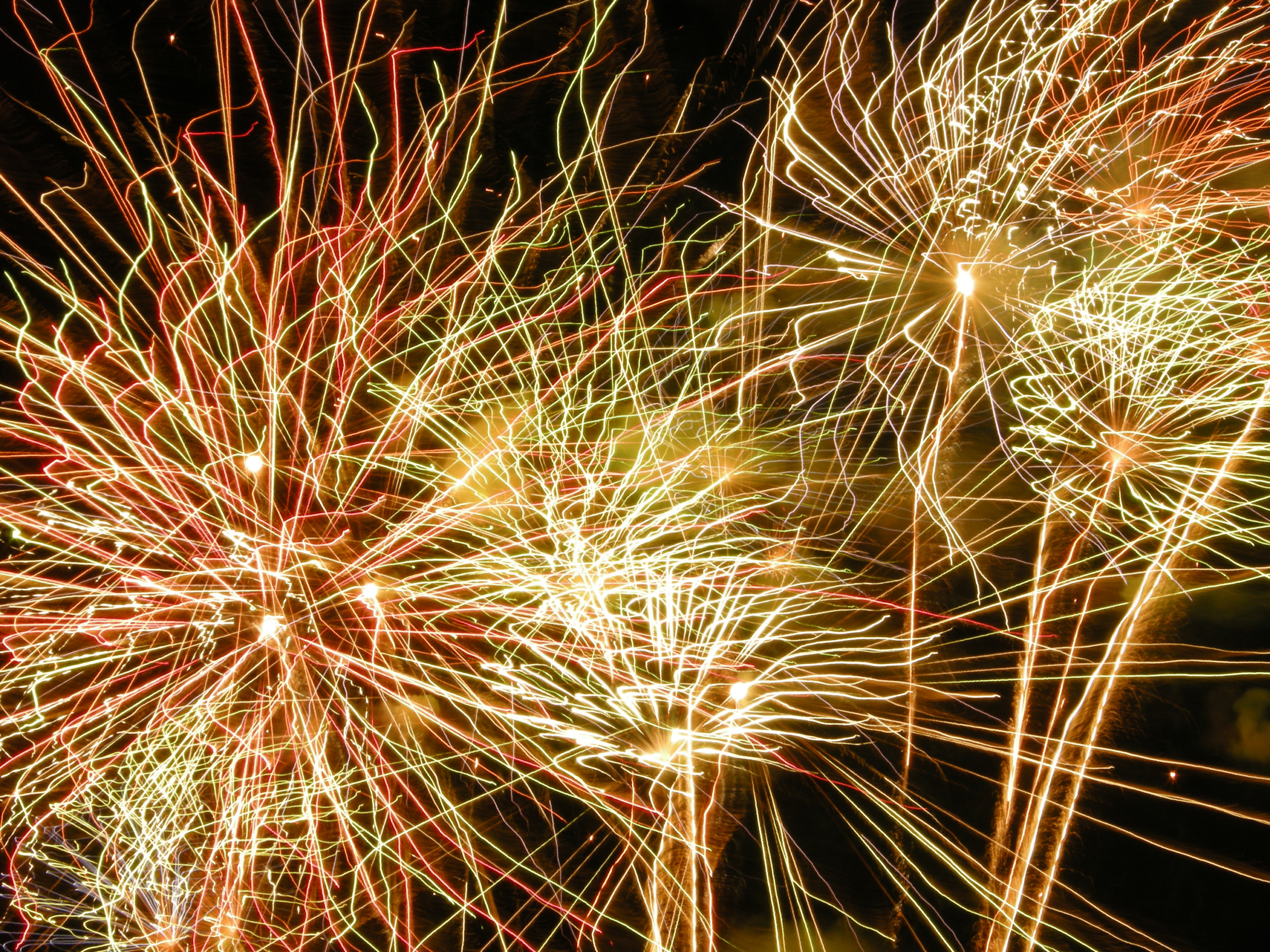
Choosing a lens
Wide-angle: If you want to photograph a wide display with the ground visible in the frame, be sure to use a wide-angle lens. This will ensure that you capture all of the elements of your environment to create a photo with a lot of activity.
Standard or Telephoto: Another option is to use a standard or telephoto lens and aim it at the sky where the fireworks will be exploding. You can get some fun and creative close-up shots this way.
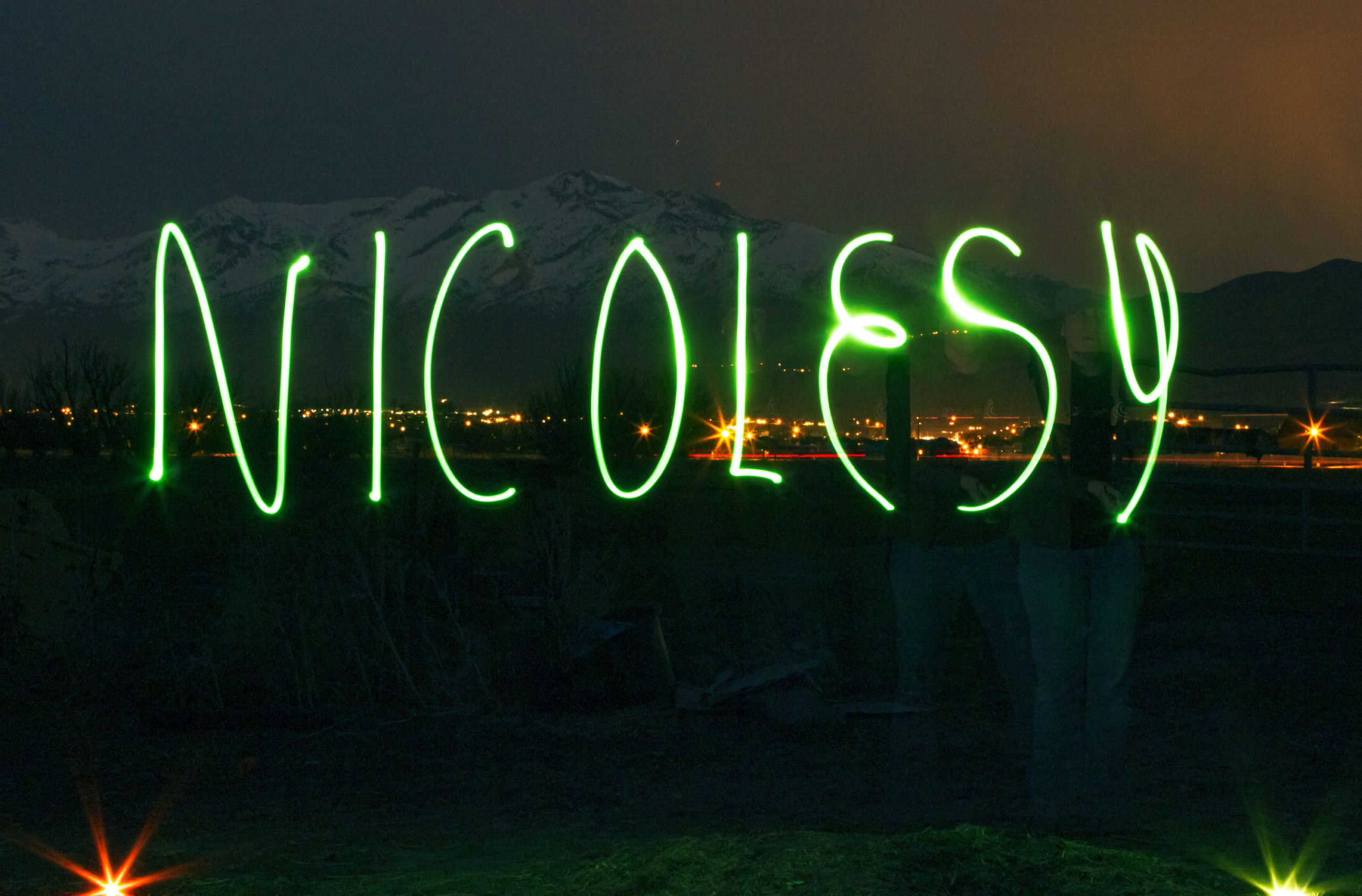
Shoot in “bulb” mode
Use a low ISO, set your aperture somewhere in the middle (usually between f/8 and f/16), make sure your lens is set to manual and the focus is set to infinity and then set your shutter speed to bulb mode. Then, as the fireworks go off, hold the shutter open for 5-10 seconds. Try a few different settings within the first minute of the show to get a good feel for the light and speed of the fireworks. (The overall exposure values are going to vary depending on the amount of ambient light/fireworks/etc; there’s really no steadfast formula.)
Fun tip: If you have sparklers or some type of light, you can use this same technique to write notes in your photos!

Plan ahead
If you are photographing a large fireworks display, scout the location early (either the day of or a few days ahead of time) and try to find out where the fireworks will be coming from. On the day of the event, you will want to set up your gear well before the start of the show. Many of the displays don’t last too long, and if you know the general direction to aim your camera then you are already one step ahead.
If you are photographing fireworks at home or at a friend’s house, try to find an area that is out of the way that gives you something in the foreground. This could be across the street, in the yard, or even behind all of the people to silhouette them as the fireworks explode.
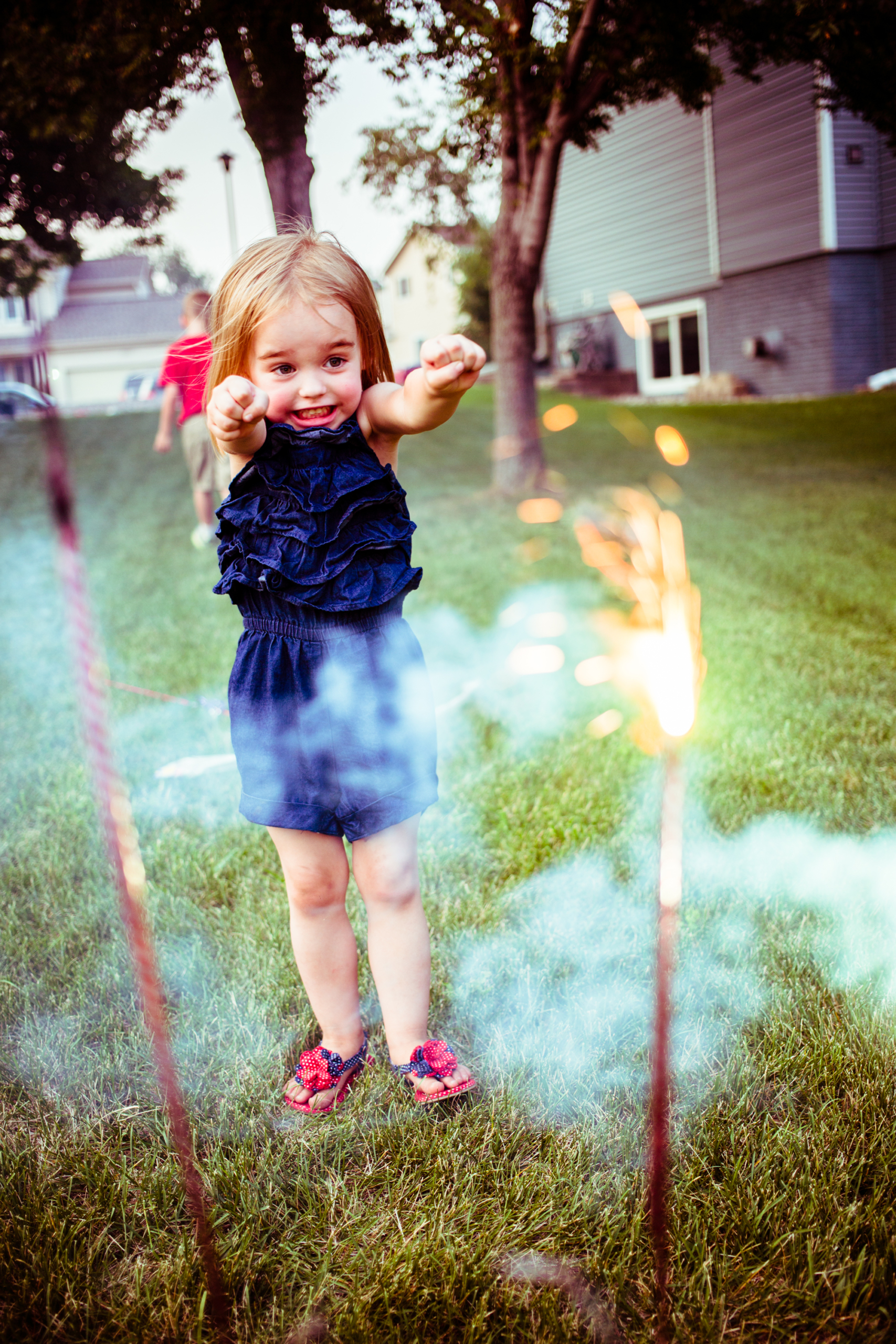
Photograph your surroundings, too!
Look at your surroundings and see what else you can include in the photo, particularly in the foreground, or photograph something completely different. People? Bridges? A significant landmark? Additional elements and identifiable scenery in the frame will add great depth to your image.
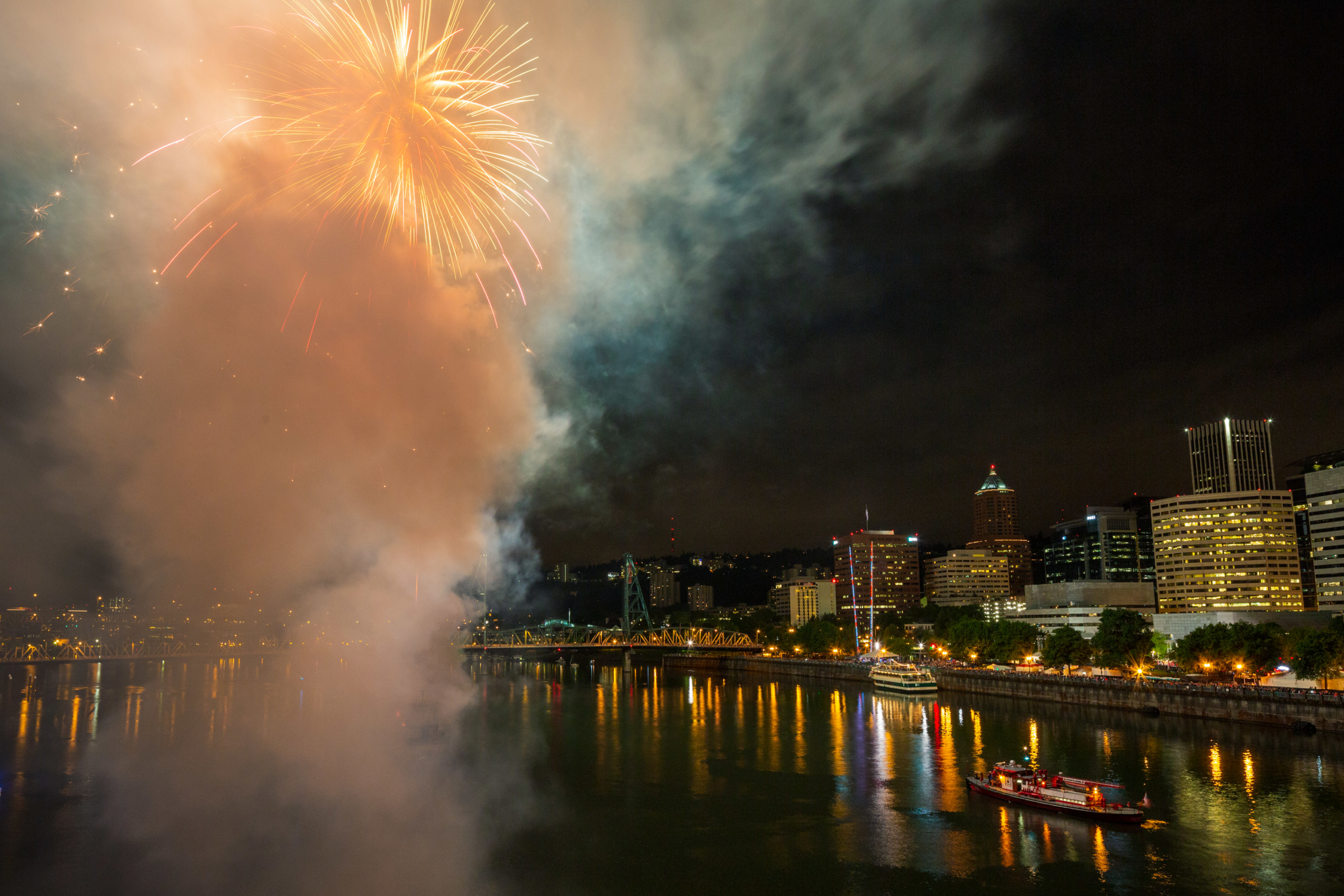
Watch out for smoke
If you can figure out which direction the wind will be blowing then try to position yourself upwind so the smoke will blow away from you. Smoke will really light up with the bursts, and if its between you and the fireworks then your photos will suffer.
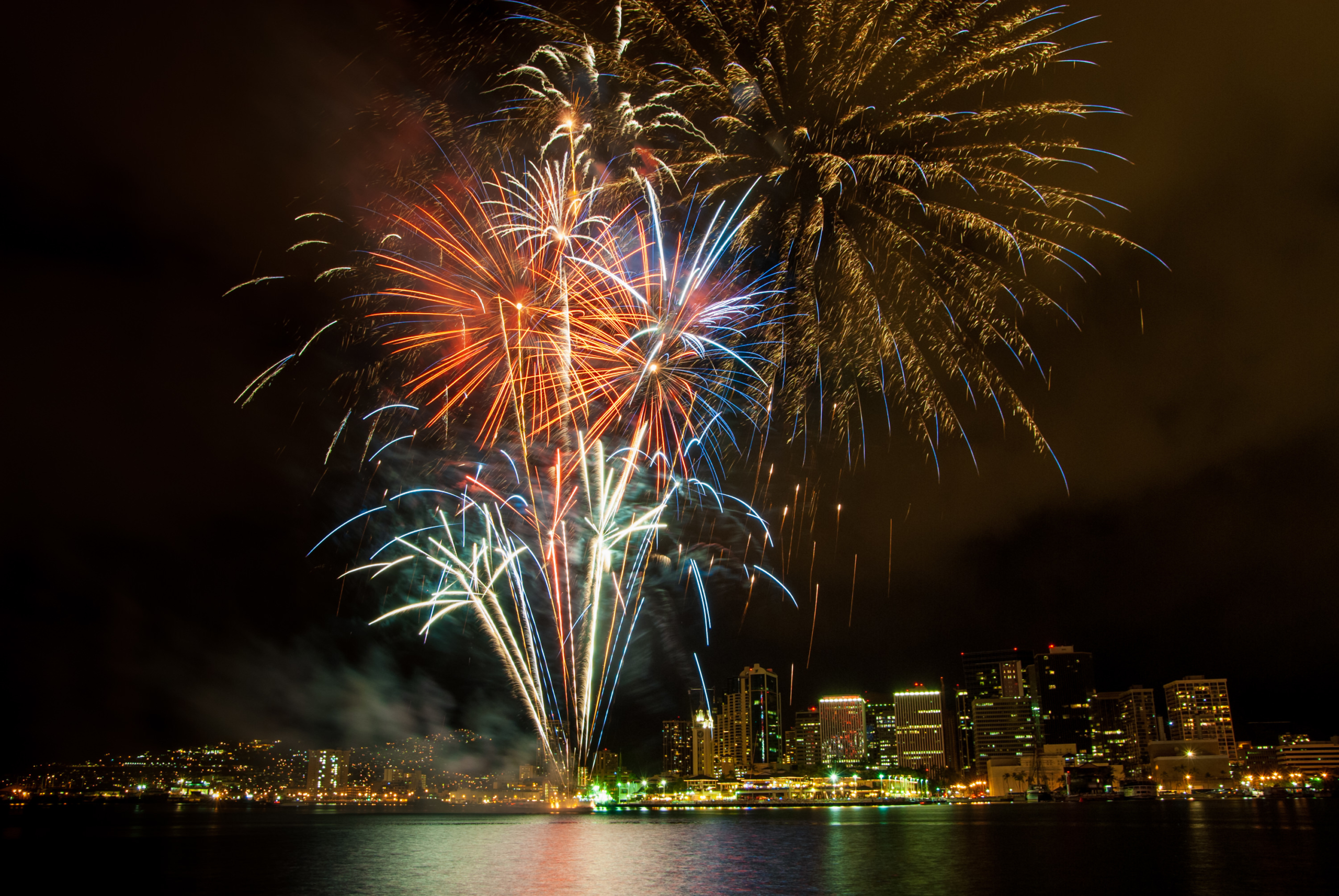
Minimize “chimping”
Fireworks displays go very quickly, and if you are always checking your camera after each shot, you will miss out on tons of great images. It’s a good idea to check your exposure every once in a while (especially right at the beginning), but once you think you have the right settings, then try to curb the temptation to look at each image until after the show.
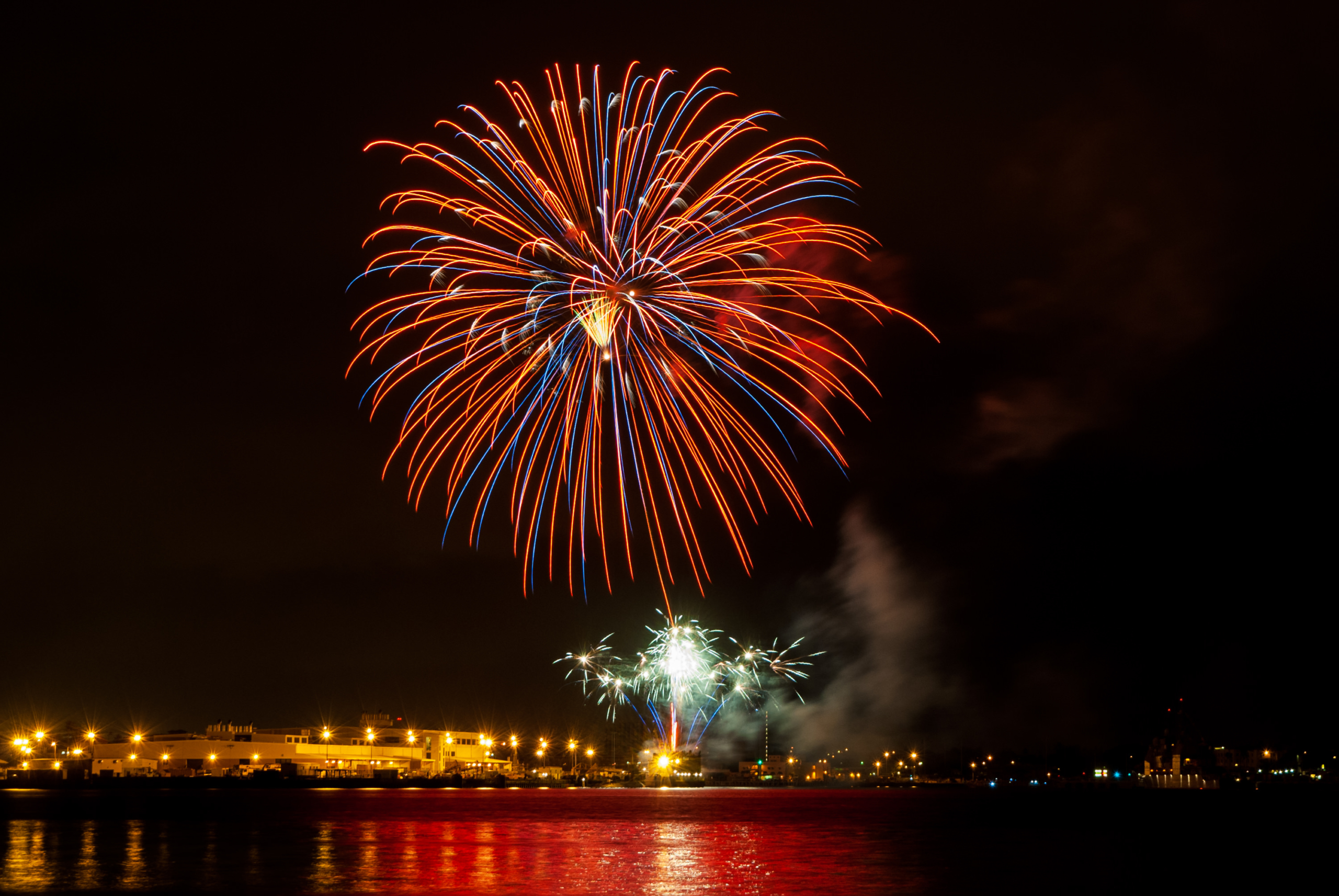
Use a black card to control bursts and trails
Want to see more bursts and fewer trails? No problem! Find a sturdy piece of black (or dark) cardboard and cover up the lens when the shutter is open as the fireworks reach the sky. Then, right before they explode, remove the cardboard. Boom!
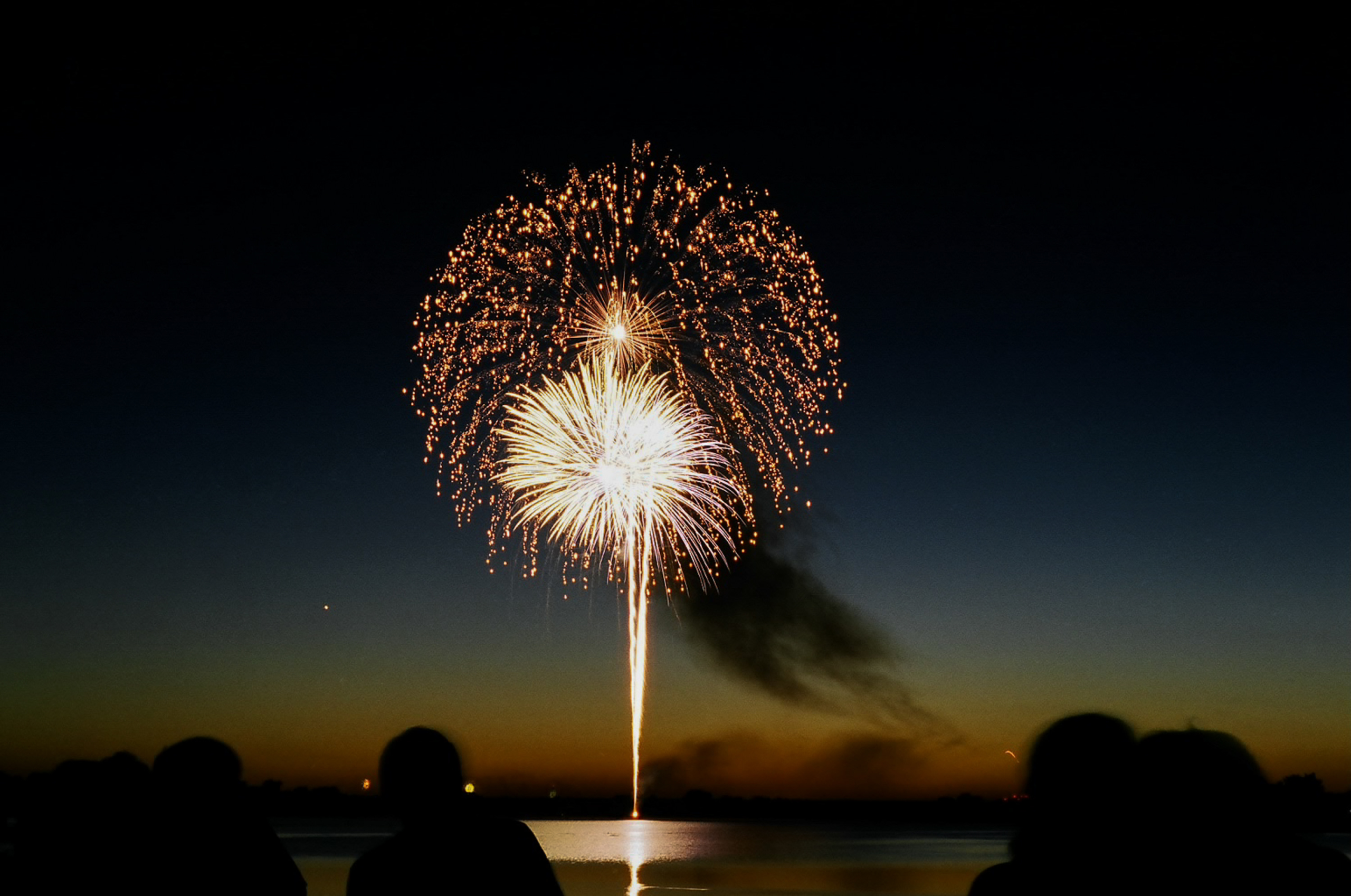
Experiment with film
Ironically, some of my best fireworks photos were from my film days. You don’t have instant feedback like you do with digital SLRs, but you can still follow these tips and get some really good images. Or, if you are shooting film alongside a digital camera, you can get your exposure settings figured out and then use them on your film camera, too.
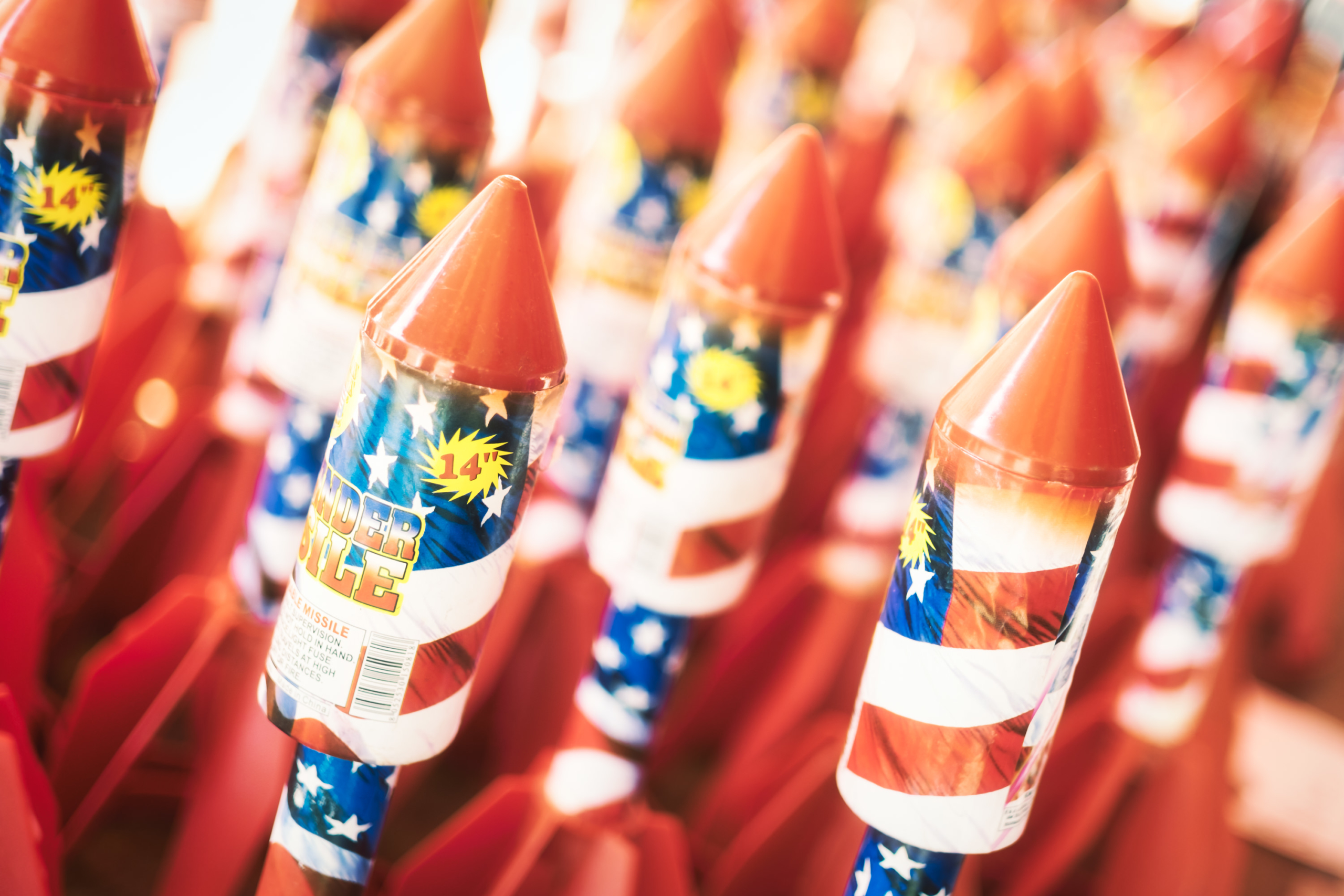
Get creative
Creating good firework photographs consists of some planning, a lot of experimentation, and a little bit of luck, and the fun is that there’s no way to predict what you are going to get! Just have fun with it and don’t take it too seriously; you’ll most likely end up having a really good time and will probably go home with some great photos, too. Also, don’t forget to enjoy the show and watch the fireworks with your eyes! It’s easy to get caught up in the moment with your camera, so try to sit back and watch the scene (and not your camera) during the show.


Add fireworks in post-processing
Did you miss the fireworks show, have dreary weather, or didn’t want to be “the photographer” at the party? I’ve got you covered! Adding fireworks in post-processing is easy. If you have standalone photos of fireworks bursts, you can add them to your nighttime photos in three simple steps:
Independence Day is approaching in the United States, and many people will be out celebrating. One very traditional part of July 4th is watching large fireworks displays, and some of you might be out with your camera to photograph the festivities. Whether you are watching a large public display, or are having a small celebration at home, here are some tips to help you create beautiful fireworks photographs.

Use a tripod and cable release
You need to make sure that your camera is as still and stable as possible to get the best shots, and a sturdy tripod is the best way to do that. If you’re unsure of your tripod’s stability, or if you know it can be a little shaky, then here’s a tip: look underneath the middle portion of the tripod to see if there is some sort of hook. Then, take your camera bag (or anything heavy with a little handle) and hang it from that hook. The weight of your bag will keep the tripod from shaking. (Just be sure that you don’t also bump whatever is hanging from that hook while making your photos!)
If you have a cable release, be sure to bring it! If you don’t have a cable release, you can also try playing with the self-timer feature but your shots and opportunities will be limited. Some camera models have off-brand cable releases for under $20 if you are interested in doing any type of night or experimental photography then I highly recommend getting one.

Choosing a lens
Wide-angle: If you want to photograph a wide display with the ground visible in the frame, be sure to use a wide-angle lens. This will ensure that you capture all of the elements of your environment to create a photo with a lot of activity.
Standard or Telephoto: Another option is to use a standard or telephoto lens and aim it at the sky where the fireworks will be exploding. You can get some fun and creative close-up shots this way.

Shoot in “bulb” mode
Use a low ISO, set your aperture somewhere in the middle (usually between f/8 and f/16), make sure your lens is set to manual and the focus is set to infinity and then set your shutter speed to bulb mode. Then, as the fireworks go off, hold the shutter open for 5-10 seconds. Try a few different settings within the first minute of the show to get a good feel for the light and speed of the fireworks. (The overall exposure values are going to vary depending on the amount of ambient light/fireworks/etc; there’s really no steadfast formula.)
Fun tip: If you have sparklers or some type of light, you can use this same technique to write notes in your photos!

Plan ahead
If you are photographing a large fireworks display, scout the location early (either the day of or a few days ahead of time) and try to find out where the fireworks will be coming from. On the day of the event, you will want to set up your gear well before the start of the show. Many of the displays don’t last too long, and if you know the general direction to aim your camera then you are already one step ahead.
If you are photographing fireworks at home or at a friend’s house, try to find an area that is out of the way that gives you something in the foreground. This could be across the street, in the yard, or even behind all of the people to silhouette them as the fireworks explode.

Photograph your surroundings, too!
Look at your surroundings and see what else you can include in the photo, particularly in the foreground, or photograph something completely different. People? Bridges? A significant landmark? Additional elements and identifiable scenery in the frame will add great depth to your image.

Watch out for smoke
If you can figure out which direction the wind will be blowing then try to position yourself upwind so the smoke will blow away from you. Smoke will really light up with the bursts, and if its between you and the fireworks then your photos will suffer.

Minimize “chimping”
Fireworks displays go very quickly, and if you are always checking your camera after each shot, you will miss out on tons of great images. It’s a good idea to check your exposure every once in a while (especially right at the beginning), but once you think you have the right settings, then try to curb the temptation to look at each image until after the show.

Use a black card to control bursts and trails
Want to see more bursts and fewer trails? No problem! Find a sturdy piece of black (or dark) cardboard and cover up the lens when the shutter is open as the fireworks reach the sky. Then, right before they explode, remove the cardboard. Boom!

Experiment with film
Ironically, some of my best fireworks photos were from my film days. You don’t have instant feedback like you do with digital SLRs, but you can still follow these tips and get some really good images. Or, if you are shooting film alongside a digital camera, you can get your exposure settings figured out and then use them on your film camera, too.

Get creative
Creating good firework photographs consists of some planning, a lot of experimentation, and a little bit of luck, and the fun is that there’s no way to predict what you are going to get! Just have fun with it and don’t take it too seriously; you’ll most likely end up having a really good time and will probably go home with some great photos, too. Also, don’t forget to enjoy the show and watch the fireworks with your eyes! It’s easy to get caught up in the moment with your camera, so try to sit back and watch the scene (and not your camera) during the show.


Add fireworks in post-processing
Did you miss the fireworks show, have dreary weather, or didn’t want to be “the photographer” at the party? I’ve got you covered! Adding fireworks in post-processing is easy. If you have standalone photos of fireworks bursts, you can add them to your nighttime photos in three simple steps:

Nicole is a photographer, published author, and educator specializing in Lightroom, Photoshop, and photography. She is best known for her books on food photography but is widely versed in various photographic genres, including landscape, nature, stock, travel, and experimental imagery.

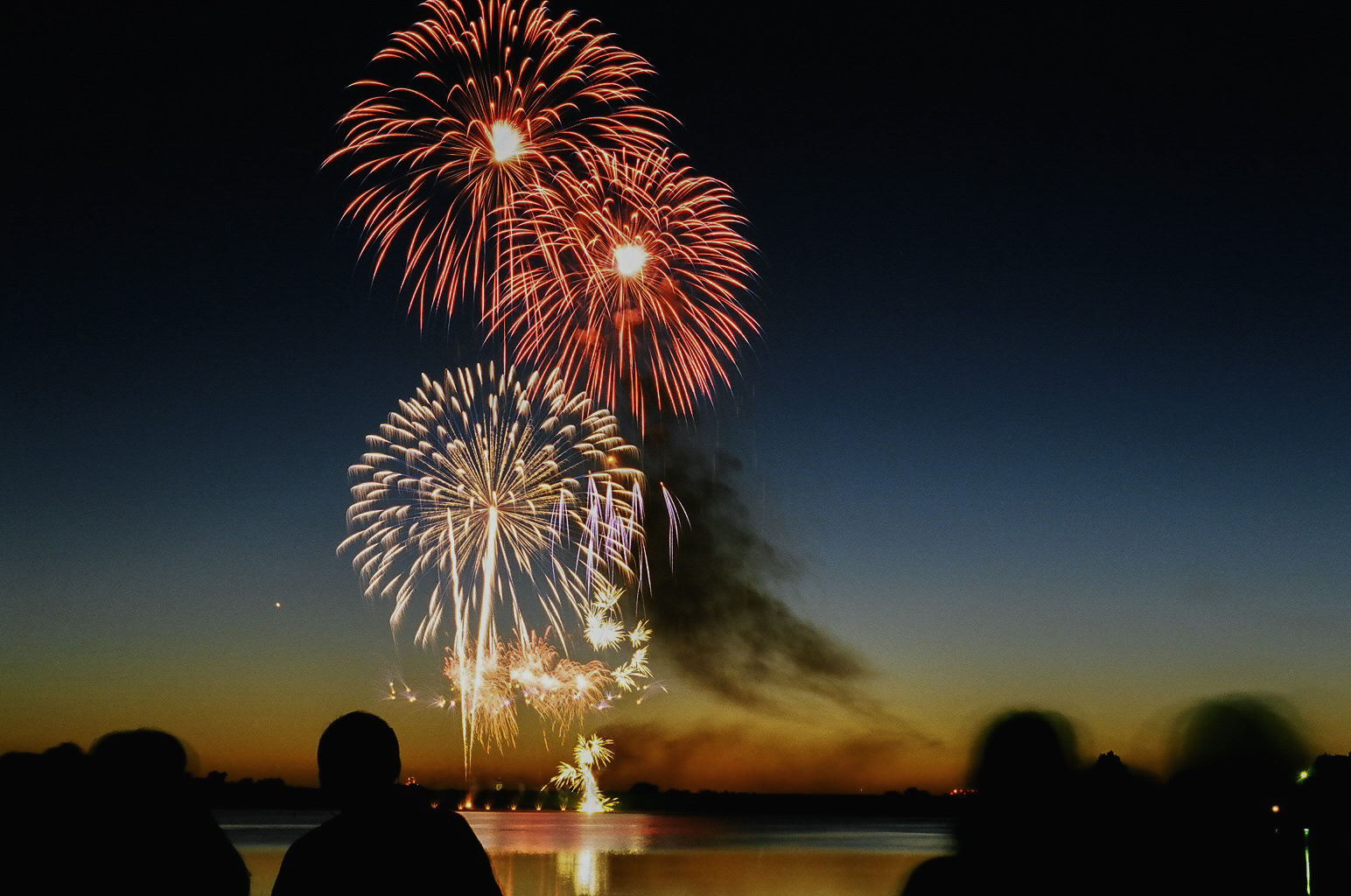
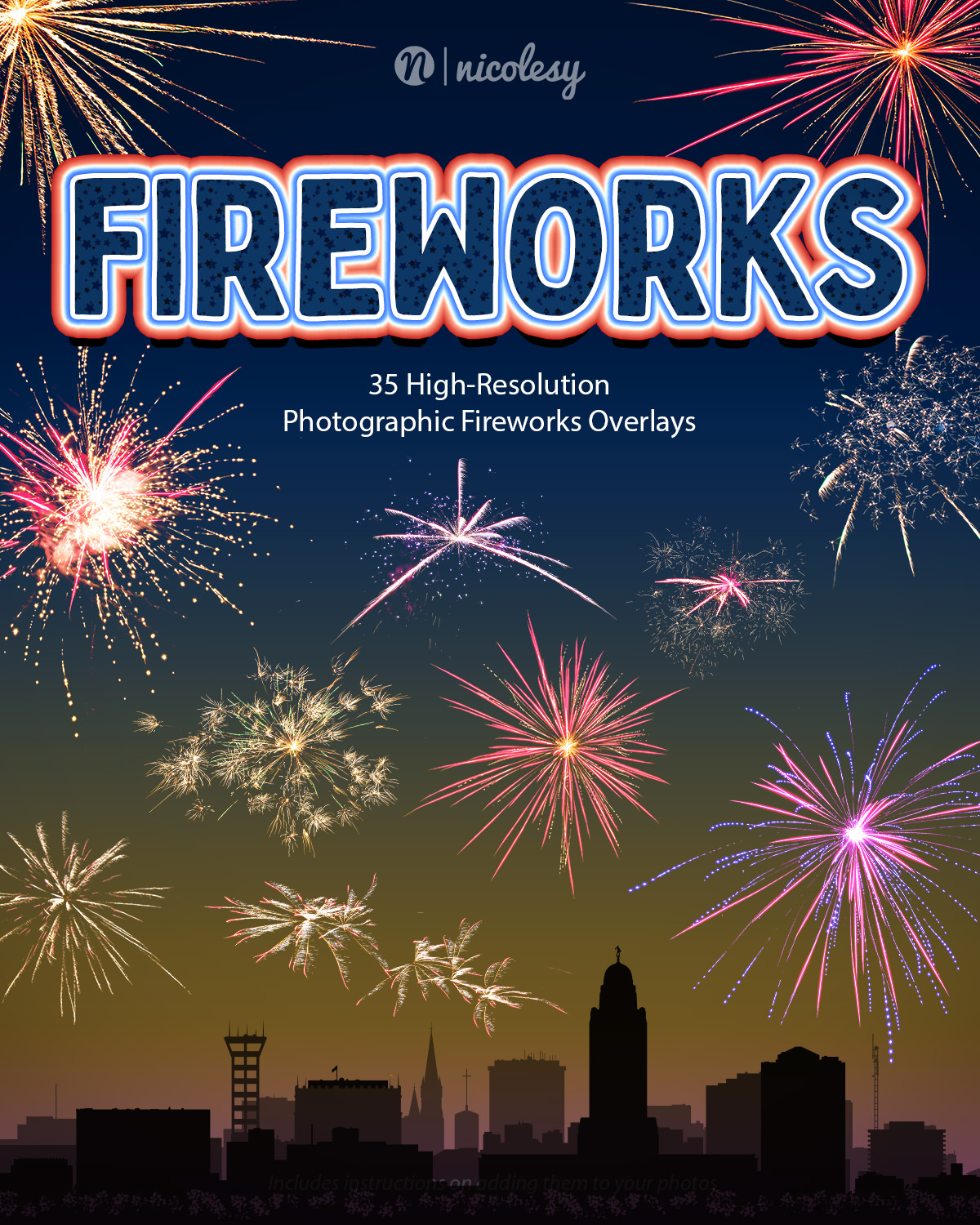
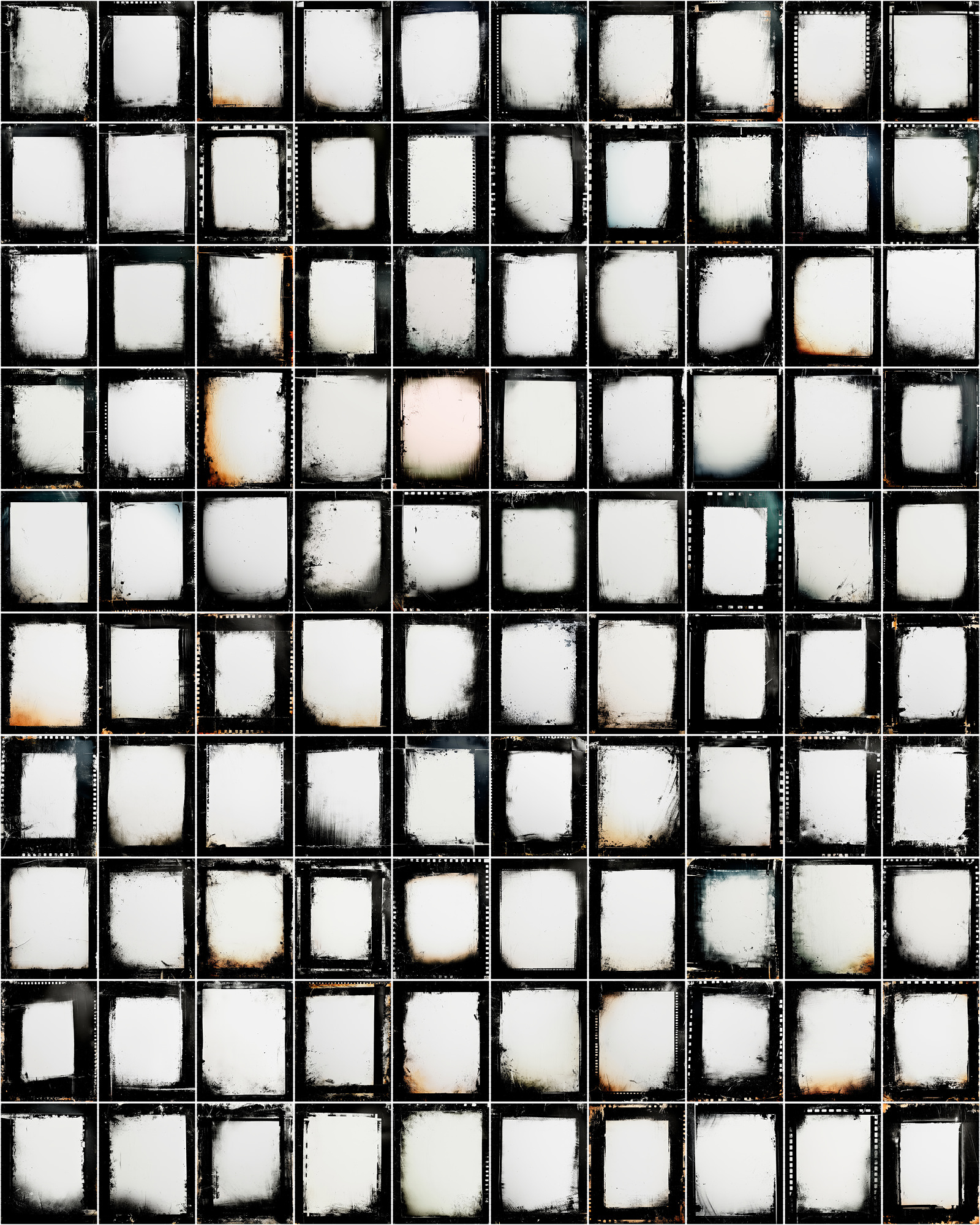
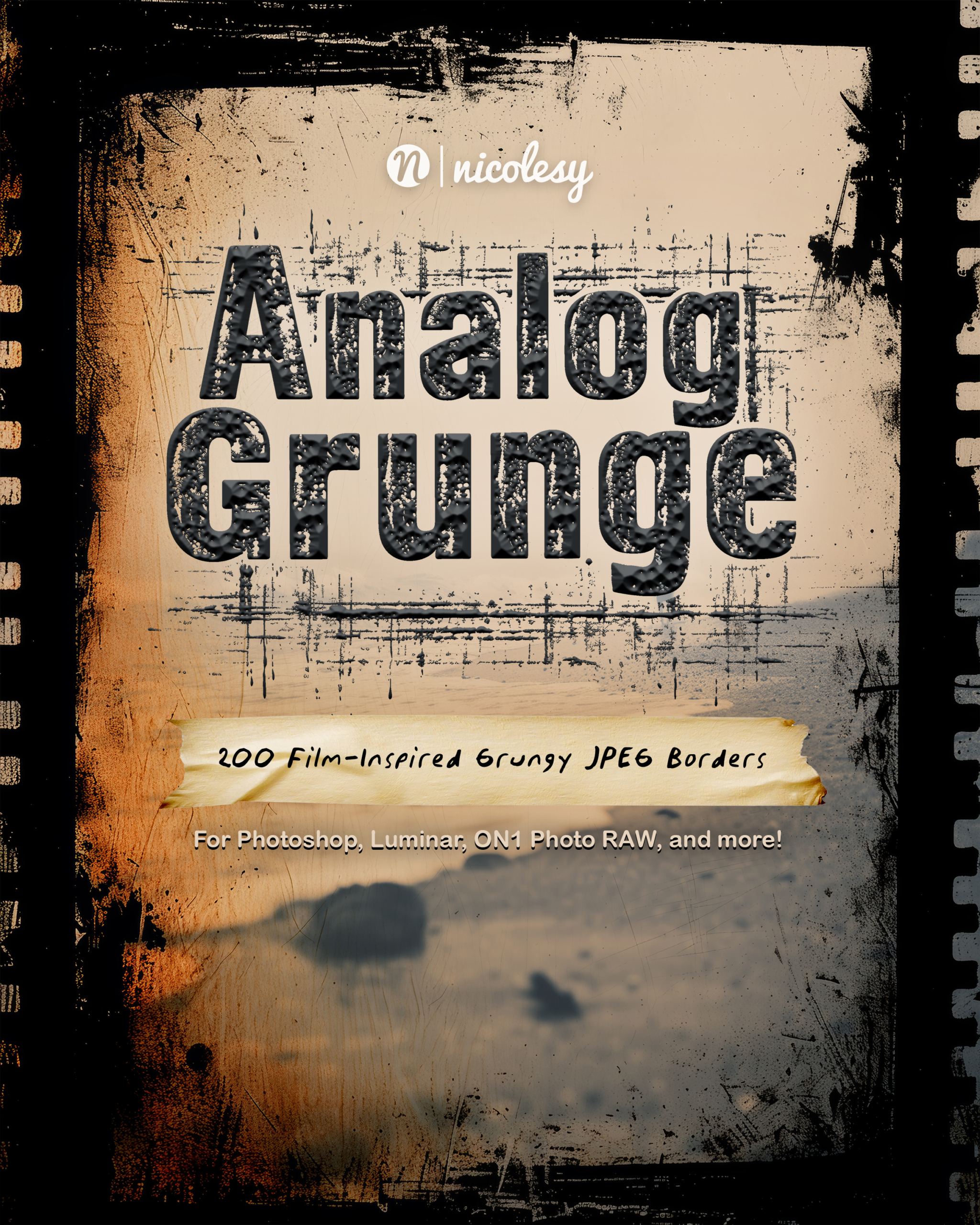
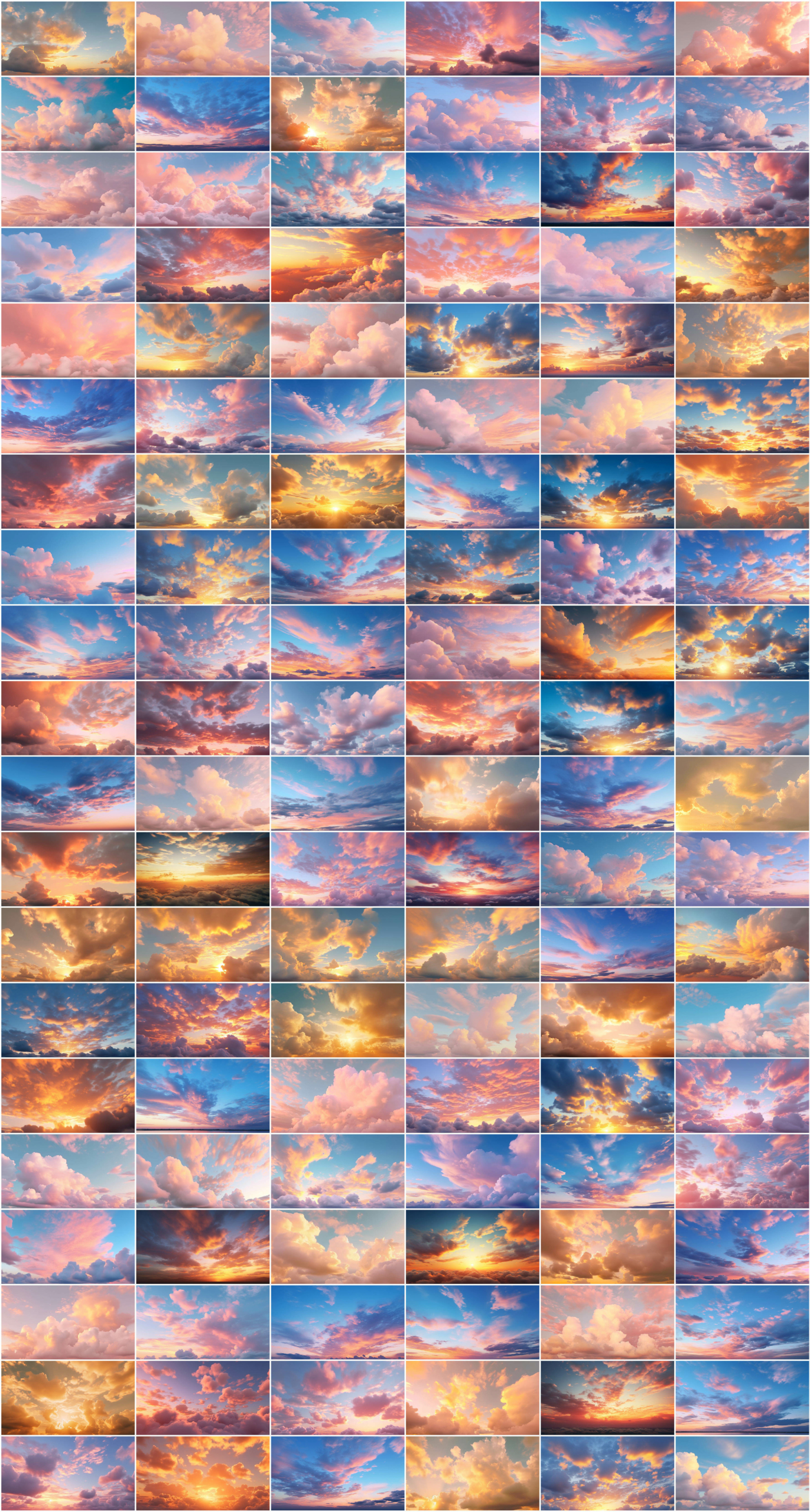
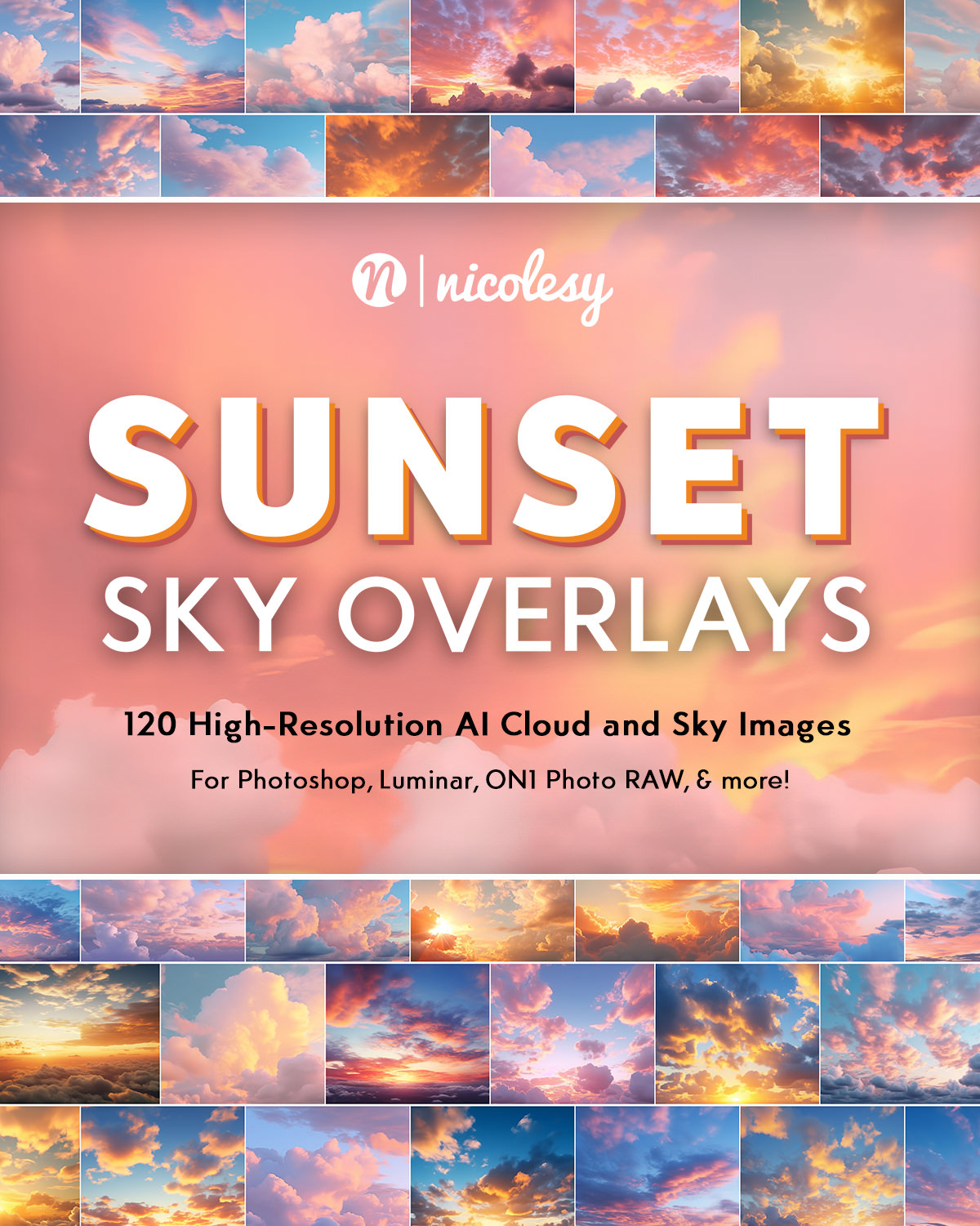

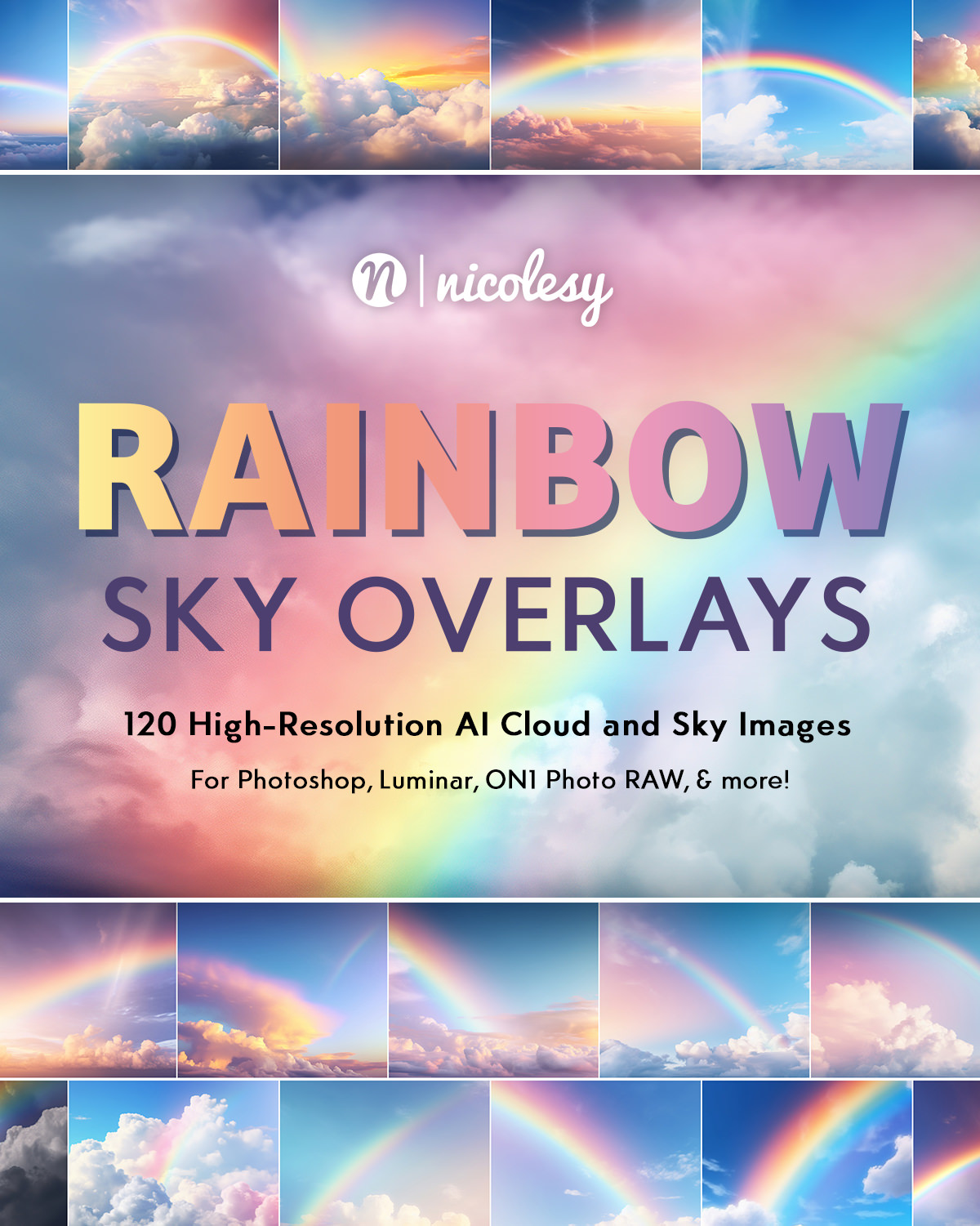
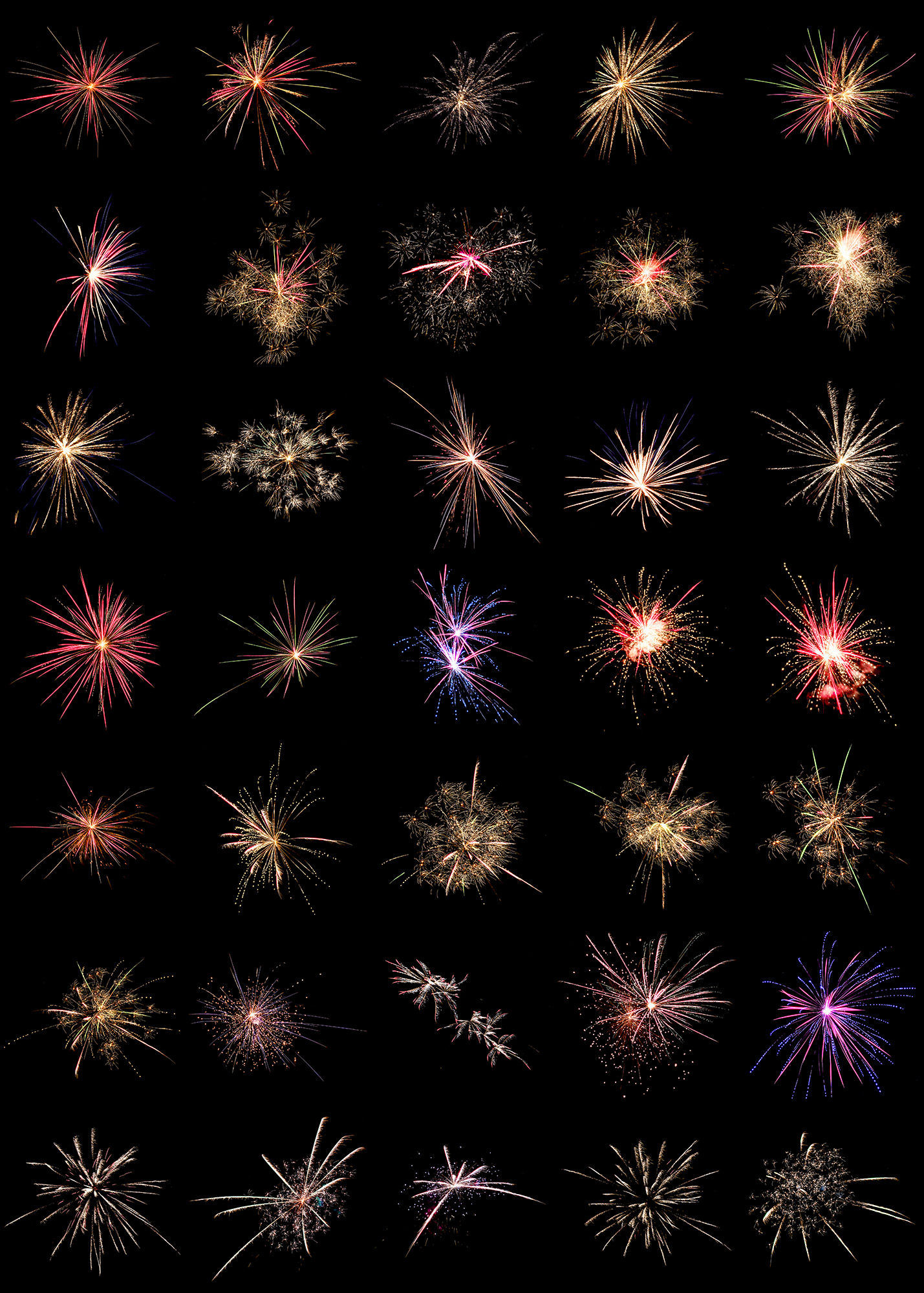
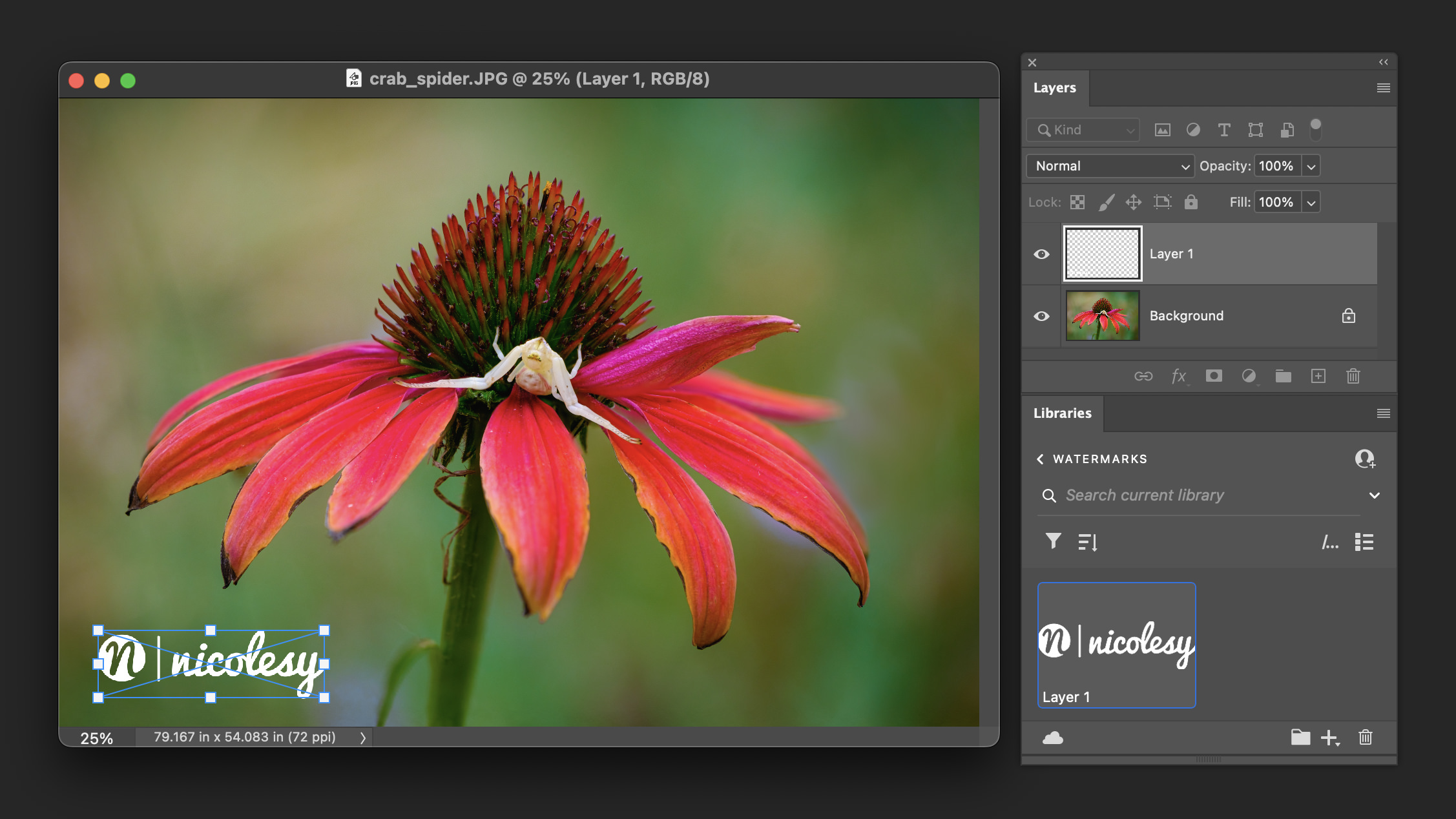
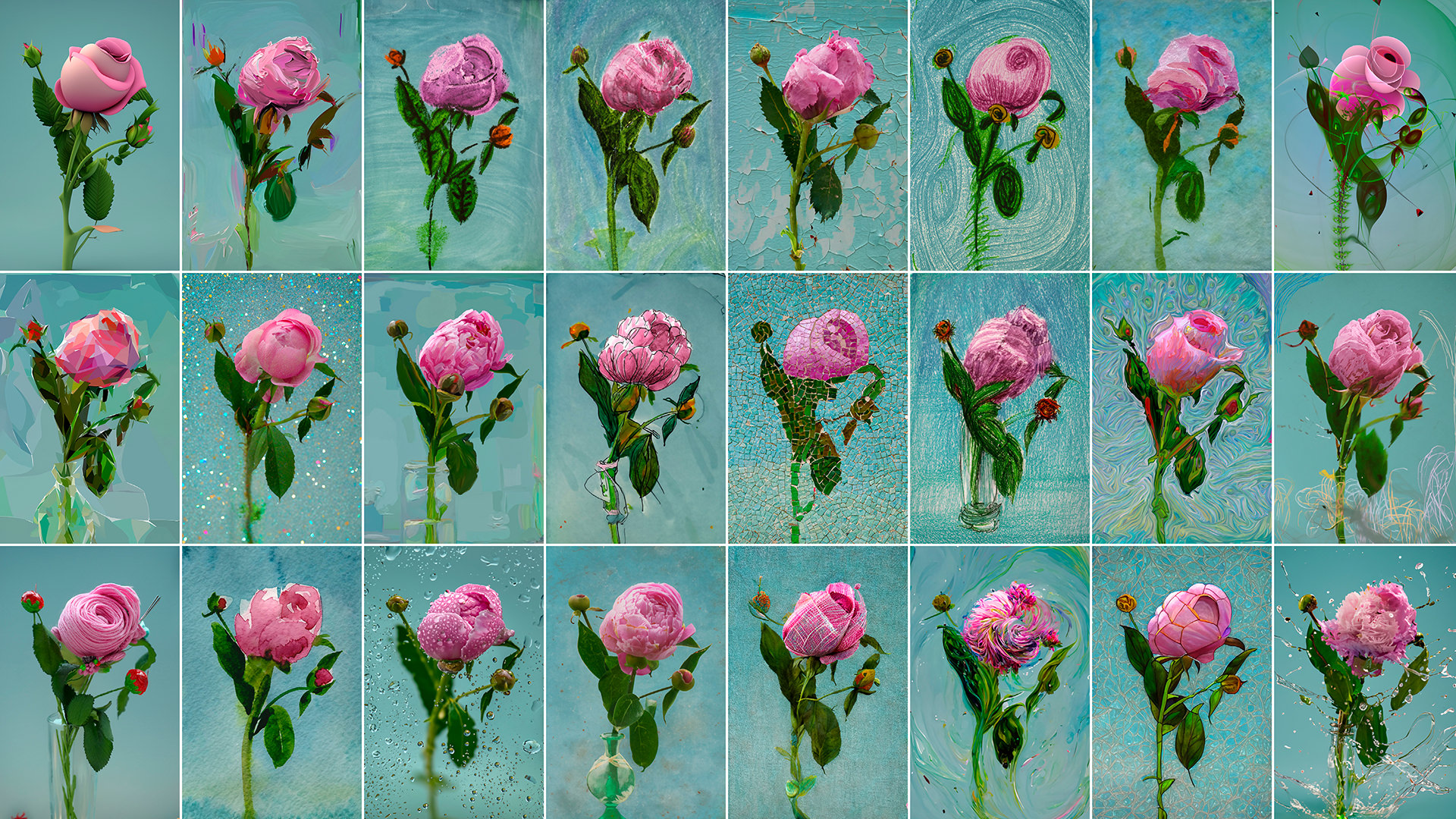
I didn’t know about the black board tip, Nicole. Thank you for sharing.
Here’s a technique I learned for fireworks. Start out of focus and open the shutter. Turn the focus wheel to in focus, then close the shutter.
Here is what I mean.
https://www.big-bang-photography.com/Galleries/Fireworks-1/
What a great tip! I might have to give this a try the next time I photograph fireworks.
Fantastic fireworks photos!!!
Great tip. Wondering if I can pull it off tomorrow night….
Great tips Nicole. I read a lot of articles you do. Thank you!
What great photos, Sheldon! Thanks for the idea!
Good tips!
Here are my samples: https://cyrilalmeras.com/photos/nuit/feu-d-artifice/best-fireworks-photographs.html